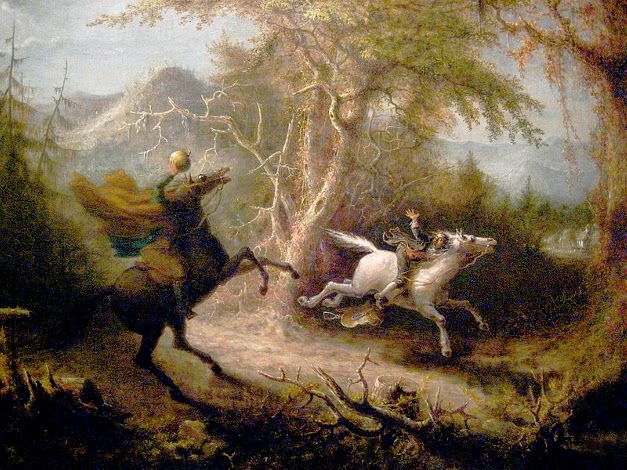A Frighteningly Brief Introduction to the Gothic in Fiction, Music, T.V., and Film
 |
| Jackson the Cat |
"The Gothic tale, characterized by its setting and atmosphere--the former tending toward ill-storied mansions located in remote, rustic areas, the latter toward gloom and impending disaster--flourished for many years: from the age of Horace Walpole and Anne Radcliffe into the early twentieth century, when it died with Edith Wharton. The genre also typically featured an unlikely, melancholy hero who confronts a half-remembered legend concerning a dark presence who once terrorized the region in life and is still rumored to haunt the land in death, or an innocent who was tortured to death sometime in the distant past and who is said to still walk the land after nightfall."
-James Person
From its awkward beginnings in the late 18th century with Horace Walpole's pseudo-medieval novel, The Castle of Otranto, the literary style known as "Gothic" has grown to become very popular. While there are pure Gothic stories, often elements of the Gothic exist in other styles of tales. While the Gothic style nearly died out in the twentieth century, it is now alive and well. Authors of Gothic tales, or authors who use Gothic elements in their works, include Nathaniel Hawthorne,Washington Irving, Shirley Jackson, Ray Bradbury, Russell Kirk, Mary Shelley, Jane Austen, the Brontë sisters, Robert Louis Stevenson, Victor Hugo, H.P. Lovecraft,Sheridan Le Fanu, Sir Walter Scott, Edith Wharton, Edgar Allan Poe, Ambrose Bierce, Ann Radcliffe, and Charles Dickens.
Modern and postmodern music, television, and movies are filled with Gothic creativity that draws directly and indirectly from Gothic literature. The Doors, The Cure, The Damned, and Alice Cooper are just four of a plethora of musical acts drawing on Gothic themes and styles. "The Twilight Zone" was, perhaps, America's first television experience of the Gothic, and it began a broader public fascination with the genre that has never waned, leading to such programs as "Alfred Hitchcock Presents," "The Addams Family,""The Munsters," "Dark Shadows," "Twin Peaks," "The X-Files," "The Ray Bradbury Theater," "American Gothic," "American Horror Story," "Supernatural," and "Hannibal," all of which, if not purely Gothic, are heavily imbued with Gothic elements, as is M. Night Shyamalan's recent series, "Wayward Pines." Also, Shyamalan's cinematic triumphs, "The Sixth Sense," and "Signs" are solidly Gothic films. Other marvelous Gothic films include Tod Browning's version of "Dracula," with the incomparable Bela Lugosi in the title role, James Whale's adaptation of Mary Shelley's "Frankenstein" starring the talented Boris Karloff, who never spoke a word in this talkie,Anglo-Catholic director Terence Fisher's tale of good triumphing over evil, "The Devil Rides Out," and Alejandro Amenábar’s purgatorial and complicated "The Others," where Nicole Kidman gives a solid lead performance supported by a brilliant cast. I would be remiss to close without mentioning that Gothic "living movie" which blends hyperreality, nostalgia, the comic, and the Gothic to terrorize and enchant: Disneyland's Haunted Mansion. In this dark ride, you actually participate in the movie as you ride through the Mansion on your "Doom Buggy." This ride is both symbol and enactment of the triumph of the Gothic in our culture.
-Jeffrey Dennis Pearce

